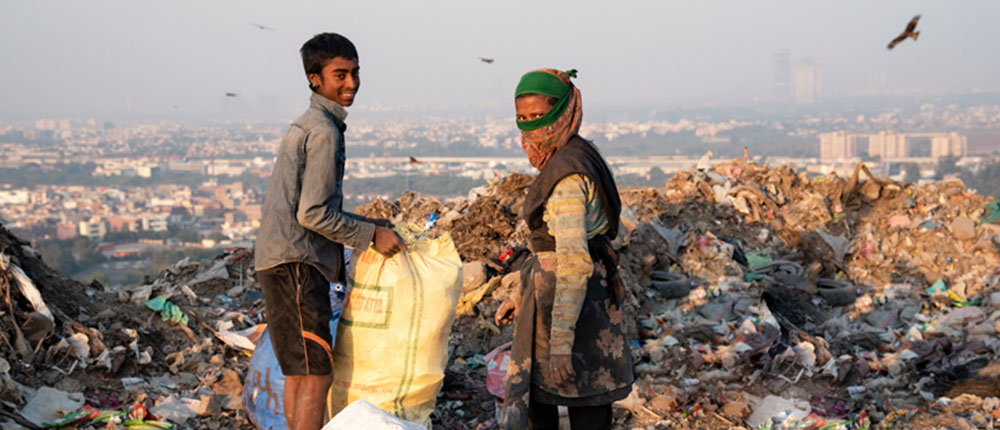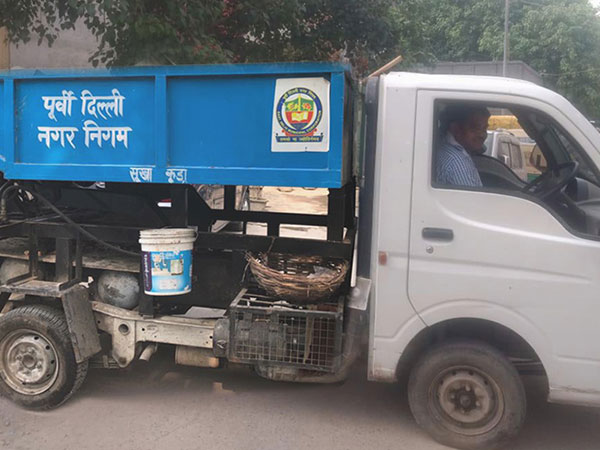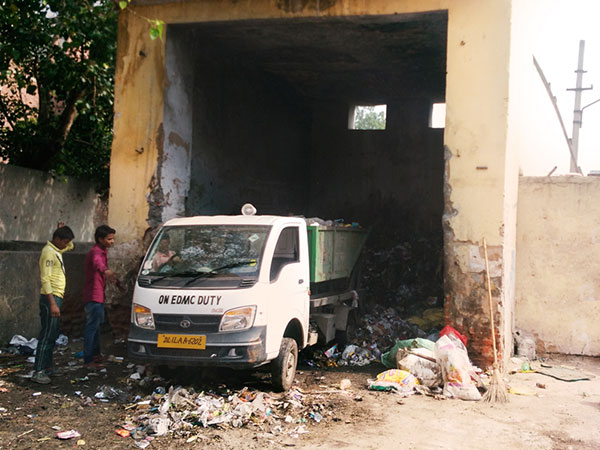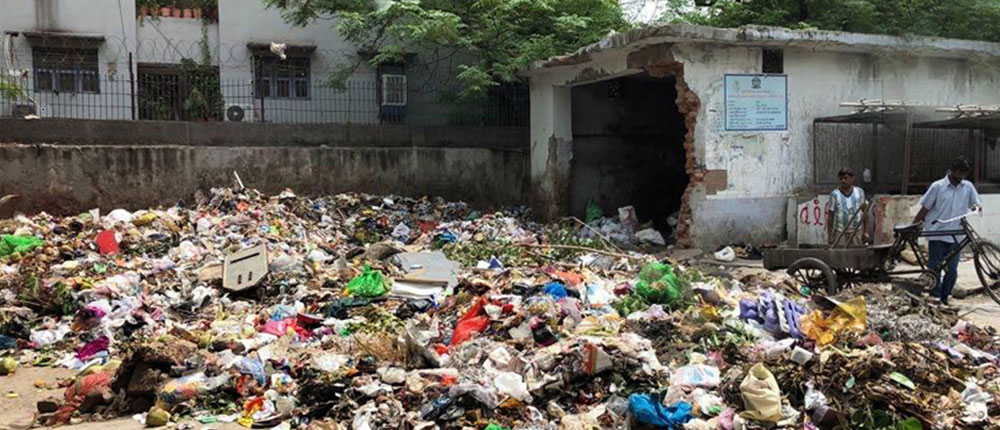A Municipal Solid Waste Management (MSWM) audit of a civic body in Delhi brings the importance of informal waste collectors into focus. There are about 1,50,000 rag pickers in the National Capital Region.

In mid-2018, The Energy and Resources Institute (TERI) conducted an audit on the waste collection mechanisms in East Delhi. The objective of the audit was to identify gaps in waste management and collection systems and help East Delhi Municipal Corporation (EDMC) to improve waste management practices. With a statistical approach, it covered 60 colonies spread among 40 wards in EDMC area. Inputs were taken from different stakeholders ranging from residents, markets, institutions, street vendors, street sweepers, waste collectors, waste transporters, and sanitary inspectors. Sourabh Manuja, Fellow, Environment and Waste Management Division, elaborates on the survey findings:
1) What were the most striking aspects related to waste collection and segregation practices in EDMC area?
The Solid Waste Management Rules (SWM), 2016 by the central Ministry of Environment, Forests and Climate Change (MoEFCC) enforce a generator to segregate their waste at source and further municipal bodies have to build all infrastructure related to segregated waste collection and management. Our findings show that most of the people were neither aware of the rules nor the fact that organic waste has to be segregated/composted. Some of the reasons identified for low segregation levels at households were lack of awareness (63%), unwillingness to segregate (40%), and lack of space for two bins (23%). Clearly, people must be made aware of the consequences of unsegregated waste as well as the benefits of composting for healthy participation.
It was also revealed during our survey that about 84% of the surveyed colonies do not have municipal bins to collect and dispose segregated waste. About 64% of households do not even use dustbins to store waste and more than half of the population (58%) has a perception that waste picker will mix segregated waste anyway. The system is lacking in properly enforcing the rules and there is neither any strict monitoring, nor penalties for non-compliance.
2) What were the suitable recommendations made to EDMC in the assessment?
Waste management has six functional elements: generation, collection, storage, transport, treatment, and disposal. At each of these levels, TERI’s assessment outlined the aforementioned gaps and made suitable recommendations to EDMC for addressing these shortcomings. To list a few, 1) capacity building and awareness creation among waste generators, 2) introducing a colour-coded, three-bin system to ensure segregation of biodegradable, recyclable as well as special/hazardous waste, 3) putting separate compartments in ghanta gaadis (a light-duty truck for waste collection) and dhalaos (three-walled structures) for waste, 4) setting up decentralized waste management systems such as composting facilities in all colonies, and 5) integrating informal sector into the waste management sector.


3) Why should informal waste pickers be integrated into the system?
The SWM Rules 2016 outline the need to integrate the informal sector into waste management. Since EDMC’s primary waste collection services are not able to cover the area daily at all locations, the informal sector is catering to the highest percentage of population in East Delhi. The fleet of ghanta gaadis serves only at a particular time and may not collect it from door to door, especially from narrow lanes with a dead-end. About 49% of households, 28% of institutions, and 21% of market (shops) are being served by informal waste collectors. So, they certainly play a crucial role in managing MSW, more so in highly congested areas such as East Delhi.
On top of that, the extent of recycling by informal rag pickers is huge. So, the preferred option is to bring in the informal sector into formal waste management planning to achieve recycling objectives, which is also one of the mandates as per SWM Rules 2016. However, before absorbing informal sector, not only training, health check-ups, and Personal Protective Equipment (PPE) should be provided to informal waste pickers but also they need to be educated about handling the hazardous waste components.
To integrate the informal sector, EDMC can learn from successful solid waste management models in cities of Pune, and Ambikapur. Embracing informal workers into the organized waste-collection workforce will motivate them and offer a sense of dignity. Of course, this will result in a more efficient waste management system.
4) How has EDMC taken up your recommendations?
Our team from TERI conducted this detailed study last year and EDMC has assigned a project implementation unit to take proper action. EDMC has asked TERI again to conduct a similar kind of evaluation in 2019 to further highlight inconsistencies in urban waste management after their corrective actions based on last year’s audit. The civic body aims to develop full infrastructure to support the implementation of SWM Rules, 2016.
Also, as per the National Green Tribunal (NGT) order in March, the East Delhi civic body has declared three model wards—Yamuna Vihar, Anand Vihar, and Mayur Vihar—to achieve 100% waste segregation and collection, and full implementation of SWM Rules 2016, Construction and Demolition Waste Management Rules 2016 and Plastic Waste Management Rules 2016.
5) Why is segregation at source so critical?
Unsegregated waste is of no value and trash is treasure only when segregated at source. Diverse waste materials demand different methods of treatment. Segregation at source is the future of waste management. Let us see an example of plastic straws: There is a decent price in the market for it. But why would someone invest their time picking about 500 straws to make up 1 kilogram which is worth only INR 20? So, segregation at source provides an ideal opportunity for low-valued waste to get collected and recycled.
Secondly, it is much more efficient to treat segregated waste—at compost unit or waste to energy plant—as there is less effort in sorting through waste. By putting biodegradable waste into decentralised organic waste composting units, the quantity of waste transported to a disposal site can be reduced, recyclables can be efficiently collected and non-recyclables can be fed to waste to energy plant. As a result, segregating at source of waste generation helps increase the rate of recycling and reduce waste going to landfills.

EDMC just doesn’t have space nor it can afford to buy more land to store waste being generated at the current rate of 2,310 tonnes per day. Since Ghazipur landfill is already operating beyond its capacity, dumping of organic waste into the landfill must be stopped. This will also help reducing greenhouse gas (GHG) emission in India where the waste sector contributes about 3% of total emissions, out of which solid waste disposal causes 20% of GHG emission.
6) Do you believe such an approach/assessment will help more urban local bodies in India?
Yes, it is important for urban local bodies in India to learn about the status of waste management system and practices. Only then, the civic bodies can formulate a suitable action plan or framework to tackle waste problems. South Delhi Municipal Corporation (SDMC) and New Delhi Municipal Council (NDMC) have shown interest to undertake the study, and help them identify and plug the gaps in the waste management sector.
On a larger scale, there is no documented case of such assessment on the challenges of solid waste management in any other city in India, perhaps because there is no particular mandate. Therefore, undertaking an independent/third-party assessment of waste collection system in their jurisdiction is one of the most tangible things ULBs can do. EDMC waste audit is just a blueprint for other civic bodies to replicate. The ripple effects of such assessments will help municipalities to adopt a decisive strategy for sustainable waste management and help them achieve the zero-waste to landfill goal.

